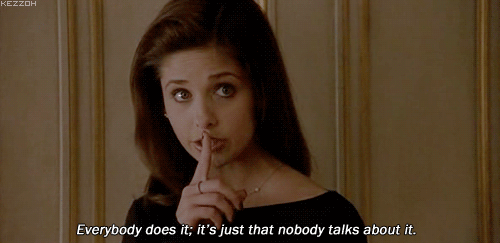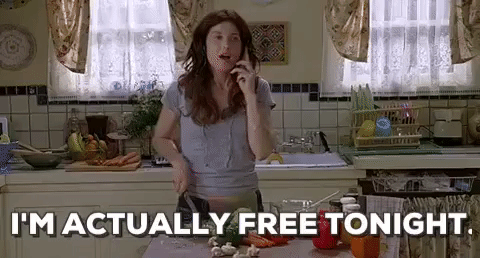The day is finally here. The weeks, if not months, of LinkedIn stalking, cold emailing and painful networking have finally paid off and you scored yourself an ‘informational’ with someone on the inside. Now what?

In case, you’re still not clear on the what an Informational is and why it’s important, checkout the definition from our friends at World Education Services:
“An informational interview involves an informal meeting with the main goal of gathering insight on your desired industry, company, or organization. Essentially, the potential job seeker gathers inside information while connecting with valuable contacts that may connect them with opportunities in the future.”
-WES
We’re going to give this person a name because, even though it’s grammatically correct, the “he or she” grammar game is exhausting to read and write (sorry English majors!).
Meet Shrek — your ‘in’ to your dream job and the person on the other line for this Informational.

Some tips before the call
Make it super easy to find a time that works with both of your schedules because Shrek is #busy. Send them 2–3 options for 3–5 hour open blocks that work for you.
For example:
“I’m looking forward to speaking with you. I’ve included some times below that are open. Please let me know what works best with your schedule and I’ll send out an invite to block both of our calendars.
Monday January 19th, 2:00–6:00pm
Tuesday, January 20th, 8:00–11:30am
Friday, January 22nd, 8:00am-6:00pm”
If it’s a phone call, book 30 minutes. If it’s an in-person coffee, book 1 hour to be safe.
#Techtip: You can also use a tool like Calendly that integrates with your Gmail and makes it super easy for Shrek to find a time that works in his schedule without the million ‘Oh shoot! I have pilates’ emails back and forth. If it’s an international call, make sure you’re speaking in their time zone. Yes, that means you’ll have to do some math (or Googling because it’s #2018).
Once you’ve found a time, send Shrek a calendar invite to [email protected] with the location (phone number if it’s a call) and a friendly note including the meeting objective.

Do your homework
Once the scheduling is out of the way, it’s time to study up. Spend some time reading about the company on their website and in the news and jot down a few notes and questions. Add Shrek on LinkedIn with a short message (“Looking forward to speaking with you later this week!”). See where Shrek went to school, what his professional background is and if you have any shared interests or connections (no way — you know Lord Farquaad, too?!). These details can serve as a great icebreaker when you open up the call.
Set an objective + brainstorm some questions
Now that you’ve done your homework, write down 1–2 objectives you have for the call.
What are you trying to get out of this?
That could be:
- I want to impress this person so they have me on their short list of candidates
- I want to figure out if they’re actually interested in candidates like myself so I know whether this is a valid opportunity worth pursuing or not.
- I want to understand what this company and role is about to figure out if I’m really interested in this opportunity.
Once you’ve figured out your personal objectives for the call, write down 5–10 questions you want to cover on the call that align to these objectives.
Now it’s CALL (or coffee) DAY
Start the call by connecting on a human note.
That doesn’t mean jumping straight into your questions. Keep in mind, Shrek made time to speak with you and the more enjoyable of a call, the more he’ll like you, the deeper your connection will be and the more transparent he’ll be. For example:
“Hey Shrek! Thanks so much for making time for our call today. Did you have a nice holiday?”
“Hey Shrek! Thanks so much for making time for our call today. I saw on your LinkedIn that you volunteer for Big Brothers Big Sisters. I was actually really involved in the organization in college.”

Follow with introductions…
You might have done your homework on Shrek (stalking? where is the line?), but Shrek is a very busy person who may have completely forgotten who you are and why he’s talking to you. Make it easy for him with a quick reminder (emphasis on the quick).
“As a quick reminder, I’m currently working in Ogre Swamp but am looking to break into Far Far Away land in the production space and was looking to learn more about your experience making that same transition. I have a few questions prepared but would love to hear more about your background.”
Again, never underestimate the importance of connecting on a human note. Also, people love talking about themselves.
Kick off the questions!
Show you’ve come prepared but do not turn into a Jeopardy game show host listing off questions like you’re Alex Trebek. Your questions should be organized in a logical way and have a flow to them that’s as seamless as your vinyasa.
#1 Start with the high-level
- How did you choose to get into this industry?
- When you were looking at companies in this space, what made you decide to go with company X?
- I read on the company site that the company’s vision is XYZ, can you talk a little bit more about that and how it ties into your day to day?
- I’m really looking to [insert your career objective], are there opportunities in this company that align to that?
#2 Listen and come up with follow up questions
Don’t forget that this is a conversation. Not listening to Shrek’s answer to your question because you’re too nervous thinking about how to eloquently phrase your next question? You’re doing this wrong. It’s okay if you don’t get to all of your questions — the purpose of the prepared questions is to serve as back-up anyway. Listen to what Shrek is saying and ask follow up and clarifying questions (yes, we’re still using Shrek for this example).
Sorry, no examples here, you’ll have to come up with these on the fly. Side note- this is probably one of the reasons Improv and Acting classes are great for professional development.
#2 Go out with a bang and end with some action
You’ve got about 5–10 minutes left and it’s time to transition to the more ‘action oriented’ questions. You’ve warmed up to Shrek and it’s time to get your most pressing questions answered. SHOOT. Here are some examples.
- Do you have any tips for the application process- things to highlight in my resume or cover letter or ways to approach the interview?
- What do you see as the next steps?
- Do you have any suggestions for anyone else I should speak with?
- I’m planning on submitting my application end of this week. I would really appreciate it if I could put you down as a referral or if you could share with your HR if this is something you feel comfortable with.
Finally, the MOST important part — the thank you
Everyone knows to end the call with a ‘thank you so much for your time’ but what doesn’t happen nearly enough is the thank you email. Follow up the day of the call or next day with a short email thanking Shrek for his time and listing out any next steps that you discussed. Here’s an example:
“Shrek,
Thank you so much for your time yesterday. I learned a lot from our conversation and found your point about highlighting my entrepreneurial skills particularly insightful.
As discussed, I’ve attached my resume to this email. Thank you so much for forwarding to your HR manager. Please let me know if you need anything else from my side.
Keep in touch”
WE HOPE THIS HELPS!
–thelighthouse team


